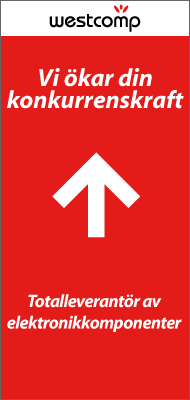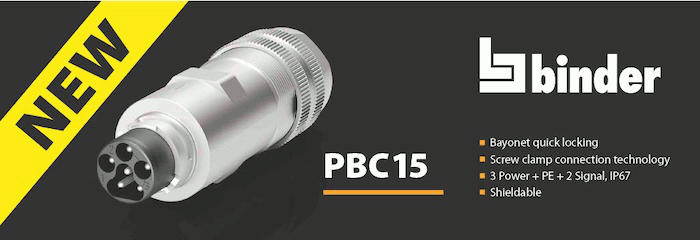Sponsrat innehåll från congatec AG
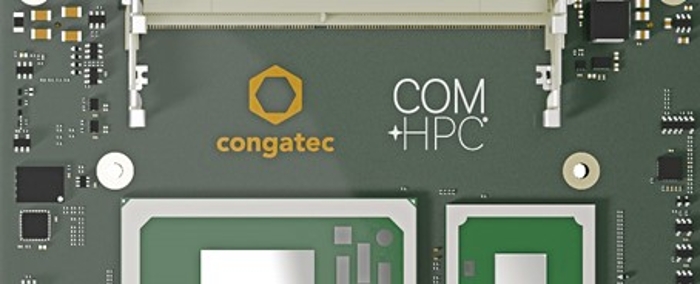
COM Express Type 6 and COM-HPC Client
A New Generation of Embedded Processors
It’s a new era for high-end embedded processors that are now available on two Computer-on-Module form factors: The brand-new COM-HPC® Client and COM Express® Type 6. With the emergence of the 11th Gen Intel® Core® processor generation (codenamed Tiger Lake), developers now have the ability to choose the most appropriate form factor that best suits their project requirements.
Considerations and Concerns
Up until today, COM Express had monopolized the high-end embedded computing field for designs based on Computer-on-Modules. However, as COM-HPC surfaced, customers started to have numerous questions concerning their upcoming high-end embedded projects. To begin with, the first obvious quandary for them is understanding which processor they should leverage. Nevertheless, this issue is easy to resolve since today, as for now the 11th Gen Intel® Core® processor generation (codenamed Tiger Lake) are available on Computer-on-Module COM-HPC® Client and COM Express® Type 6.
Comparing and Contrasting COM Express Basic and COM-HPC Size A
Much like COM Express, the COM-HPC Client form factor is a Computer-on-Module standard by the PICMG. The guidelines additionally define specific COM-HPC Server modules; however, those modules will not be discussed in this article as they are headless and server-oriented. COM-HPC Client modules on the other hand, like COM Express Type 6 modules, support graphics. COM-HPC Client modules are available in three footprints: 120 mm x 160 mm (Size C), 120 mm x 120 mm (Size B), and 120 mm x 95 mm (Size A). Hence, COM-HPC size A is practically the same as COM Express Basic with its 125 mm x 95 mm dimensions. Therefore, upgrading from COM Express Basic to COM-HPC Size A in regards to size is an effortless task as the former is only 4% larger than the latest module. The bigger Size B and Size C COM-HPC Client modules, however, cover an even higher performance class above COM Express Type 6 modules and cater to the needs of high-performance applications that are not compatible with COM Express. It’s worth mentioning, though, that no COM-HPC Client option exists for the COM Express Compact size design. Accordingly, this clearly proves how the two factors are meant to supplement each other.
 Much like its COM Express counterpart, COM-HPC Client specifies three different. Since COM-Express is only slightly smaller than COM-HPC Client Size A, users can easily upgrade from the first to the latter.
COM-HPC’s Higher Thermal Design Power
In addition to their bigger footprint sizes, COM-HPC modules can support higher power budgets than COM Express. Given that the Thermal Design Power (TDP) of COM-HPC modules can reach up to 200 watts, its power envelope is almost twice as high as that of COM Express Type 6, which cannot exceed 137 watts TDP.
COM-HPC’s Increased Number of Signal Pins & Bandwidth
COM Express Basic Type 6 and COM-HPC Client Size A are also dissimilar with regards to the connector and number of signal pins securing the module to the carrier board. While both COM Express and COM-HPC have two connectors, each COM-HPC connector has 400 pins while each COM Express connector has only 220 pins. This enormous addition in the case of COM-HPC results in a total of 800 signal pins that smoothly facilitate the connection of almost 80% more interfaces.
Moreover, since the COM-HPC connector is engineered for high-speed interfaces, it works well with high clock rates of PCIe 5.0 and 25 Gb/s Ethernet. On the other hand, because the connector is a major constraint for COM Express, it is suitable for interfaces up to PCIe Gen 3.0 and PCIe 4.0 in compatibility mode.
Much like its COM Express counterpart, COM-HPC Client specifies three different. Since COM-Express is only slightly smaller than COM-HPC Client Size A, users can easily upgrade from the first to the latter.
COM-HPC’s Higher Thermal Design Power
In addition to their bigger footprint sizes, COM-HPC modules can support higher power budgets than COM Express. Given that the Thermal Design Power (TDP) of COM-HPC modules can reach up to 200 watts, its power envelope is almost twice as high as that of COM Express Type 6, which cannot exceed 137 watts TDP.
COM-HPC’s Increased Number of Signal Pins & Bandwidth
COM Express Basic Type 6 and COM-HPC Client Size A are also dissimilar with regards to the connector and number of signal pins securing the module to the carrier board. While both COM Express and COM-HPC have two connectors, each COM-HPC connector has 400 pins while each COM Express connector has only 220 pins. This enormous addition in the case of COM-HPC results in a total of 800 signal pins that smoothly facilitate the connection of almost 80% more interfaces.
Moreover, since the COM-HPC connector is engineered for high-speed interfaces, it works well with high clock rates of PCIe 5.0 and 25 Gb/s Ethernet. On the other hand, because the connector is a major constraint for COM Express, it is suitable for interfaces up to PCIe Gen 3.0 and PCIe 4.0 in compatibility mode.
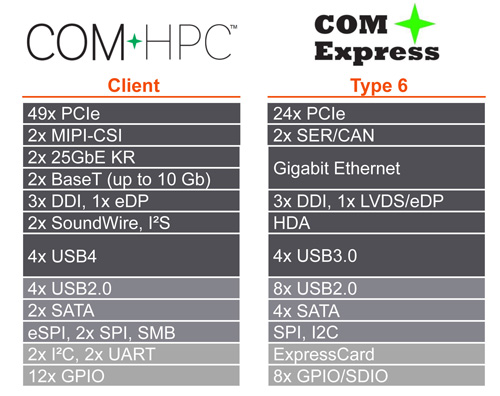 What differentiates COM-HPC Client from the COM Express Type 6: The number and bandwidth of PCIe lanes, Ethernet interfaces, and USB ports. Moreover, another distinguishing feature is that only the COM-HPC Client is supplemented with further remote management support.
Graphics and Audio Support
Since COM-HPC Client and COM Express Type 6 can handle up to four displays facilitated by three digital display interfaces (DDI) and one embedded DisplayPort (eDP), the graphics support offered by the Client form factor is equivalent to that of Type 6.
Earlier COM Express modules were fully equipped with an HDA interface; however, with multimedia interfaces, COM-HPC is able to replace this past interface with SoundWire: The new MIPI standard. It can support up to four audio codecs in parallel, with each codec having its own unique ID.
Compatibility with PCIe Gen 4 and GbE beyond 1b Gigabit Bandwidth
COM-HPC Client has almost twice as many PCle lanes as COM Express Type 6: While the latter accommodates up to 24 PCIe lanes, the former is able to provide 49 PCle lanes. It is important to note that one PCIe lane of COM-HPC Client is exclusively dedicated to communicating with the Board Management Controller (BMC) of the carrier board.
The COM-HPC Client standard additionally supports two 25 GbE KR and up to two 10 GbE BaseT Ethernet interfaces. On the other hand, COM Express Type 6 can only handle a maximum of 1x1 GbE off the module; although, more network interfaces can be connected through PCIe and controlled from the carrier board. Consequently, the developers of COM Express have to invest in the components required for the carrier board in order to match the GbE performance of COM-HPC modules.
What differentiates COM-HPC Client from the COM Express Type 6: The number and bandwidth of PCIe lanes, Ethernet interfaces, and USB ports. Moreover, another distinguishing feature is that only the COM-HPC Client is supplemented with further remote management support.
Graphics and Audio Support
Since COM-HPC Client and COM Express Type 6 can handle up to four displays facilitated by three digital display interfaces (DDI) and one embedded DisplayPort (eDP), the graphics support offered by the Client form factor is equivalent to that of Type 6.
Earlier COM Express modules were fully equipped with an HDA interface; however, with multimedia interfaces, COM-HPC is able to replace this past interface with SoundWire: The new MIPI standard. It can support up to four audio codecs in parallel, with each codec having its own unique ID.
Compatibility with PCIe Gen 4 and GbE beyond 1b Gigabit Bandwidth
COM-HPC Client has almost twice as many PCle lanes as COM Express Type 6: While the latter accommodates up to 24 PCIe lanes, the former is able to provide 49 PCle lanes. It is important to note that one PCIe lane of COM-HPC Client is exclusively dedicated to communicating with the Board Management Controller (BMC) of the carrier board.
The COM-HPC Client standard additionally supports two 25 GbE KR and up to two 10 GbE BaseT Ethernet interfaces. On the other hand, COM Express Type 6 can only handle a maximum of 1x1 GbE off the module; although, more network interfaces can be connected through PCIe and controlled from the carrier board. Consequently, the developers of COM Express have to invest in the components required for the carrier board in order to match the GbE performance of COM-HPC modules.
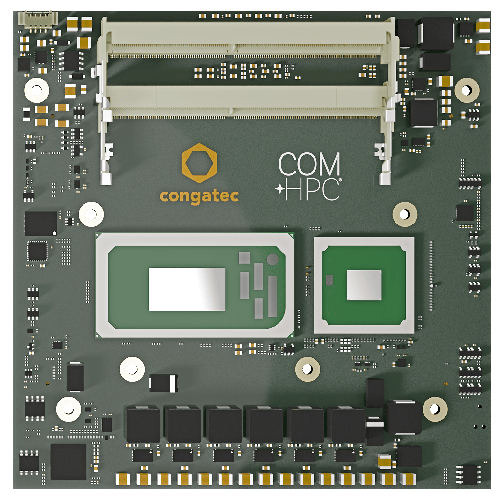 congatec’s latest COM-HPC Client modules with 11th Gen Intel Core vPro, Intel Xeon W-11000E, and Intel Celeron processors impress with a new bandwidth benchmark of up to 20 PCIe Gen 4.0 lanes for massive connected real-time IIoT gateway and intelligent edge computing workloads.
High USB Bandwidth and MIPI-CSI Interface Support
The COM-HPC standard is specifically designed to support high speed interfaces. As such, the COM-HPC Client modules can accommodate up to 4x USB 4.0 interfaces and 4x USB 2.0 proving. COM Express Type 6 modules, however, can handle up to 4x USB 3.2 and 8x USB 2.0. Notwithstanding that COM-HPC has four less USB 2.0 ports than COM Express Type 6 modules, the Client is still able to offer a larger bandwidth as the USB 4.0 transfer rate is 40 Gbps.
Moreover, COM-HPC can natively integrate up to two MIPI-CSI interfaces. These two interfaces are simultaneously economical and compatible with cameras crucial for running numerous applications and facilitating 3D vision. COM-HPC additionally allows 2x SATA interfaces to connect traditional SSDs and HDDs, as well as industrial interfaces like 2x UART and 12x GPIO. Finally, 2x I2C, SPI and eSPI complete this feature set. That said, while these COM-HPC Client features are comparable to COM Express Type 6, whereas CAN bus support is only possible with Type 6 modules.
Upgrading to COM-HPC Client: Urgent or Unnecessary?
Having meticulously compared and contrasted COM-HPC client and COM Express Type 6, it becomes clear that COM Express will be the ideal platform for most designs for a minimum of another 3-5 years. This is largely because COM-HPC Client does not introduce a completely new system bus. While earlier changes included shifting from ISA to PCI and from PCI to PCI Express, with COM-HPC, specifying a new pinpoint was crucial only because of the increased bandwidth and frequencies. Another important detail to remember is the fact that it wasn’t until 2012 that COM Express finally superseded ETX by becoming the best-selling module standard. This happened almost 11 years after the launch of ETX, and 7 years after the launch of COM Express; and despite all that, ETX modules still did not become obsolete! Lastly, PCIe generations are backwards compatible and allow PCIe Gen 3.0 designs to have a durable shelf life – long after PCIe Gen 4.0 is set up across all processor levels. Therefore, if the bandwidths and interface specifications of a given design satisfy the standard requirements, it is absolutely unnecessary to upgrade to the COM-HPC Client module.
congatec’s latest COM-HPC Client modules with 11th Gen Intel Core vPro, Intel Xeon W-11000E, and Intel Celeron processors impress with a new bandwidth benchmark of up to 20 PCIe Gen 4.0 lanes for massive connected real-time IIoT gateway and intelligent edge computing workloads.
High USB Bandwidth and MIPI-CSI Interface Support
The COM-HPC standard is specifically designed to support high speed interfaces. As such, the COM-HPC Client modules can accommodate up to 4x USB 4.0 interfaces and 4x USB 2.0 proving. COM Express Type 6 modules, however, can handle up to 4x USB 3.2 and 8x USB 2.0. Notwithstanding that COM-HPC has four less USB 2.0 ports than COM Express Type 6 modules, the Client is still able to offer a larger bandwidth as the USB 4.0 transfer rate is 40 Gbps.
Moreover, COM-HPC can natively integrate up to two MIPI-CSI interfaces. These two interfaces are simultaneously economical and compatible with cameras crucial for running numerous applications and facilitating 3D vision. COM-HPC additionally allows 2x SATA interfaces to connect traditional SSDs and HDDs, as well as industrial interfaces like 2x UART and 12x GPIO. Finally, 2x I2C, SPI and eSPI complete this feature set. That said, while these COM-HPC Client features are comparable to COM Express Type 6, whereas CAN bus support is only possible with Type 6 modules.
Upgrading to COM-HPC Client: Urgent or Unnecessary?
Having meticulously compared and contrasted COM-HPC client and COM Express Type 6, it becomes clear that COM Express will be the ideal platform for most designs for a minimum of another 3-5 years. This is largely because COM-HPC Client does not introduce a completely new system bus. While earlier changes included shifting from ISA to PCI and from PCI to PCI Express, with COM-HPC, specifying a new pinpoint was crucial only because of the increased bandwidth and frequencies. Another important detail to remember is the fact that it wasn’t until 2012 that COM Express finally superseded ETX by becoming the best-selling module standard. This happened almost 11 years after the launch of ETX, and 7 years after the launch of COM Express; and despite all that, ETX modules still did not become obsolete! Lastly, PCIe generations are backwards compatible and allow PCIe Gen 3.0 designs to have a durable shelf life – long after PCIe Gen 4.0 is set up across all processor levels. Therefore, if the bandwidths and interface specifications of a given design satisfy the standard requirements, it is absolutely unnecessary to upgrade to the COM-HPC Client module.
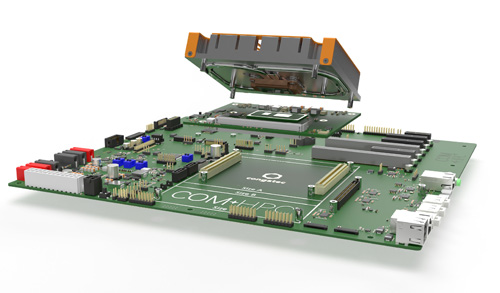 congatec’s starter set is optimized for modular system designs utilizing the latest high-speed interface technologies such as PCIe Gen4, USB 4.0 and up to ultra fast 2x25 GbE connectivity as well as integrated MIPI-CSI vision capabilities. It is based on congatec’s PICMG COM-HPC Computer-on-Module with the 11th Gen Intel Core processor technology (code name Tiger Lake).
The Users of COM-HPC
On the other hand, the users who absolutely must opt for COM-HPC are those who would need certain specific interfaces supported by the modules. These interfaces are: full USB 4.0 bandwidth, 2.5 GbE, SoundWire, and/or MIPI-CSI today. In fact, anyone seeking higher-performance PCIe or Ethernet interfaces with up to 25 GbE must also give serious consideration to COM-HPC. Moreover, developers of high-performance systems should keep in mind that it is far simpler to scale down a design within a chosen standard than wait for performance increases of another standard that may never even happen in the first place. While this has been the driving rationale for all innovations involving COM-HPC, it is also balanced by the equally effective motto of “Never change a running system.”
congatec’s starter set is optimized for modular system designs utilizing the latest high-speed interface technologies such as PCIe Gen4, USB 4.0 and up to ultra fast 2x25 GbE connectivity as well as integrated MIPI-CSI vision capabilities. It is based on congatec’s PICMG COM-HPC Computer-on-Module with the 11th Gen Intel Core processor technology (code name Tiger Lake).
The Users of COM-HPC
On the other hand, the users who absolutely must opt for COM-HPC are those who would need certain specific interfaces supported by the modules. These interfaces are: full USB 4.0 bandwidth, 2.5 GbE, SoundWire, and/or MIPI-CSI today. In fact, anyone seeking higher-performance PCIe or Ethernet interfaces with up to 25 GbE must also give serious consideration to COM-HPC. Moreover, developers of high-performance systems should keep in mind that it is far simpler to scale down a design within a chosen standard than wait for performance increases of another standard that may never even happen in the first place. While this has been the driving rationale for all innovations involving COM-HPC, it is also balanced by the equally effective motto of “Never change a running system.”
 Author: Christian Eder, Director Marketing at congatec and Chairman of the PICMG COM-HPC Subcommittee
www.congatec.com
Author: Christian Eder, Director Marketing at congatec and Chairman of the PICMG COM-HPC Subcommittee
www.congatec.com
 Much like its COM Express counterpart, COM-HPC Client specifies three different. Since COM-Express is only slightly smaller than COM-HPC Client Size A, users can easily upgrade from the first to the latter.
COM-HPC’s Higher Thermal Design Power
In addition to their bigger footprint sizes, COM-HPC modules can support higher power budgets than COM Express. Given that the Thermal Design Power (TDP) of COM-HPC modules can reach up to 200 watts, its power envelope is almost twice as high as that of COM Express Type 6, which cannot exceed 137 watts TDP.
COM-HPC’s Increased Number of Signal Pins & Bandwidth
COM Express Basic Type 6 and COM-HPC Client Size A are also dissimilar with regards to the connector and number of signal pins securing the module to the carrier board. While both COM Express and COM-HPC have two connectors, each COM-HPC connector has 400 pins while each COM Express connector has only 220 pins. This enormous addition in the case of COM-HPC results in a total of 800 signal pins that smoothly facilitate the connection of almost 80% more interfaces.
Moreover, since the COM-HPC connector is engineered for high-speed interfaces, it works well with high clock rates of PCIe 5.0 and 25 Gb/s Ethernet. On the other hand, because the connector is a major constraint for COM Express, it is suitable for interfaces up to PCIe Gen 3.0 and PCIe 4.0 in compatibility mode.
Much like its COM Express counterpart, COM-HPC Client specifies three different. Since COM-Express is only slightly smaller than COM-HPC Client Size A, users can easily upgrade from the first to the latter.
COM-HPC’s Higher Thermal Design Power
In addition to their bigger footprint sizes, COM-HPC modules can support higher power budgets than COM Express. Given that the Thermal Design Power (TDP) of COM-HPC modules can reach up to 200 watts, its power envelope is almost twice as high as that of COM Express Type 6, which cannot exceed 137 watts TDP.
COM-HPC’s Increased Number of Signal Pins & Bandwidth
COM Express Basic Type 6 and COM-HPC Client Size A are also dissimilar with regards to the connector and number of signal pins securing the module to the carrier board. While both COM Express and COM-HPC have two connectors, each COM-HPC connector has 400 pins while each COM Express connector has only 220 pins. This enormous addition in the case of COM-HPC results in a total of 800 signal pins that smoothly facilitate the connection of almost 80% more interfaces.
Moreover, since the COM-HPC connector is engineered for high-speed interfaces, it works well with high clock rates of PCIe 5.0 and 25 Gb/s Ethernet. On the other hand, because the connector is a major constraint for COM Express, it is suitable for interfaces up to PCIe Gen 3.0 and PCIe 4.0 in compatibility mode.
 What differentiates COM-HPC Client from the COM Express Type 6: The number and bandwidth of PCIe lanes, Ethernet interfaces, and USB ports. Moreover, another distinguishing feature is that only the COM-HPC Client is supplemented with further remote management support.
Graphics and Audio Support
Since COM-HPC Client and COM Express Type 6 can handle up to four displays facilitated by three digital display interfaces (DDI) and one embedded DisplayPort (eDP), the graphics support offered by the Client form factor is equivalent to that of Type 6.
Earlier COM Express modules were fully equipped with an HDA interface; however, with multimedia interfaces, COM-HPC is able to replace this past interface with SoundWire: The new MIPI standard. It can support up to four audio codecs in parallel, with each codec having its own unique ID.
Compatibility with PCIe Gen 4 and GbE beyond 1b Gigabit Bandwidth
COM-HPC Client has almost twice as many PCle lanes as COM Express Type 6: While the latter accommodates up to 24 PCIe lanes, the former is able to provide 49 PCle lanes. It is important to note that one PCIe lane of COM-HPC Client is exclusively dedicated to communicating with the Board Management Controller (BMC) of the carrier board.
The COM-HPC Client standard additionally supports two 25 GbE KR and up to two 10 GbE BaseT Ethernet interfaces. On the other hand, COM Express Type 6 can only handle a maximum of 1x1 GbE off the module; although, more network interfaces can be connected through PCIe and controlled from the carrier board. Consequently, the developers of COM Express have to invest in the components required for the carrier board in order to match the GbE performance of COM-HPC modules.
What differentiates COM-HPC Client from the COM Express Type 6: The number and bandwidth of PCIe lanes, Ethernet interfaces, and USB ports. Moreover, another distinguishing feature is that only the COM-HPC Client is supplemented with further remote management support.
Graphics and Audio Support
Since COM-HPC Client and COM Express Type 6 can handle up to four displays facilitated by three digital display interfaces (DDI) and one embedded DisplayPort (eDP), the graphics support offered by the Client form factor is equivalent to that of Type 6.
Earlier COM Express modules were fully equipped with an HDA interface; however, with multimedia interfaces, COM-HPC is able to replace this past interface with SoundWire: The new MIPI standard. It can support up to four audio codecs in parallel, with each codec having its own unique ID.
Compatibility with PCIe Gen 4 and GbE beyond 1b Gigabit Bandwidth
COM-HPC Client has almost twice as many PCle lanes as COM Express Type 6: While the latter accommodates up to 24 PCIe lanes, the former is able to provide 49 PCle lanes. It is important to note that one PCIe lane of COM-HPC Client is exclusively dedicated to communicating with the Board Management Controller (BMC) of the carrier board.
The COM-HPC Client standard additionally supports two 25 GbE KR and up to two 10 GbE BaseT Ethernet interfaces. On the other hand, COM Express Type 6 can only handle a maximum of 1x1 GbE off the module; although, more network interfaces can be connected through PCIe and controlled from the carrier board. Consequently, the developers of COM Express have to invest in the components required for the carrier board in order to match the GbE performance of COM-HPC modules.
 congatec’s latest COM-HPC Client modules with 11th Gen Intel Core vPro, Intel Xeon W-11000E, and Intel Celeron processors impress with a new bandwidth benchmark of up to 20 PCIe Gen 4.0 lanes for massive connected real-time IIoT gateway and intelligent edge computing workloads.
High USB Bandwidth and MIPI-CSI Interface Support
The COM-HPC standard is specifically designed to support high speed interfaces. As such, the COM-HPC Client modules can accommodate up to 4x USB 4.0 interfaces and 4x USB 2.0 proving. COM Express Type 6 modules, however, can handle up to 4x USB 3.2 and 8x USB 2.0. Notwithstanding that COM-HPC has four less USB 2.0 ports than COM Express Type 6 modules, the Client is still able to offer a larger bandwidth as the USB 4.0 transfer rate is 40 Gbps.
Moreover, COM-HPC can natively integrate up to two MIPI-CSI interfaces. These two interfaces are simultaneously economical and compatible with cameras crucial for running numerous applications and facilitating 3D vision. COM-HPC additionally allows 2x SATA interfaces to connect traditional SSDs and HDDs, as well as industrial interfaces like 2x UART and 12x GPIO. Finally, 2x I2C, SPI and eSPI complete this feature set. That said, while these COM-HPC Client features are comparable to COM Express Type 6, whereas CAN bus support is only possible with Type 6 modules.
Upgrading to COM-HPC Client: Urgent or Unnecessary?
Having meticulously compared and contrasted COM-HPC client and COM Express Type 6, it becomes clear that COM Express will be the ideal platform for most designs for a minimum of another 3-5 years. This is largely because COM-HPC Client does not introduce a completely new system bus. While earlier changes included shifting from ISA to PCI and from PCI to PCI Express, with COM-HPC, specifying a new pinpoint was crucial only because of the increased bandwidth and frequencies. Another important detail to remember is the fact that it wasn’t until 2012 that COM Express finally superseded ETX by becoming the best-selling module standard. This happened almost 11 years after the launch of ETX, and 7 years after the launch of COM Express; and despite all that, ETX modules still did not become obsolete! Lastly, PCIe generations are backwards compatible and allow PCIe Gen 3.0 designs to have a durable shelf life – long after PCIe Gen 4.0 is set up across all processor levels. Therefore, if the bandwidths and interface specifications of a given design satisfy the standard requirements, it is absolutely unnecessary to upgrade to the COM-HPC Client module.
congatec’s latest COM-HPC Client modules with 11th Gen Intel Core vPro, Intel Xeon W-11000E, and Intel Celeron processors impress with a new bandwidth benchmark of up to 20 PCIe Gen 4.0 lanes for massive connected real-time IIoT gateway and intelligent edge computing workloads.
High USB Bandwidth and MIPI-CSI Interface Support
The COM-HPC standard is specifically designed to support high speed interfaces. As such, the COM-HPC Client modules can accommodate up to 4x USB 4.0 interfaces and 4x USB 2.0 proving. COM Express Type 6 modules, however, can handle up to 4x USB 3.2 and 8x USB 2.0. Notwithstanding that COM-HPC has four less USB 2.0 ports than COM Express Type 6 modules, the Client is still able to offer a larger bandwidth as the USB 4.0 transfer rate is 40 Gbps.
Moreover, COM-HPC can natively integrate up to two MIPI-CSI interfaces. These two interfaces are simultaneously economical and compatible with cameras crucial for running numerous applications and facilitating 3D vision. COM-HPC additionally allows 2x SATA interfaces to connect traditional SSDs and HDDs, as well as industrial interfaces like 2x UART and 12x GPIO. Finally, 2x I2C, SPI and eSPI complete this feature set. That said, while these COM-HPC Client features are comparable to COM Express Type 6, whereas CAN bus support is only possible with Type 6 modules.
Upgrading to COM-HPC Client: Urgent or Unnecessary?
Having meticulously compared and contrasted COM-HPC client and COM Express Type 6, it becomes clear that COM Express will be the ideal platform for most designs for a minimum of another 3-5 years. This is largely because COM-HPC Client does not introduce a completely new system bus. While earlier changes included shifting from ISA to PCI and from PCI to PCI Express, with COM-HPC, specifying a new pinpoint was crucial only because of the increased bandwidth and frequencies. Another important detail to remember is the fact that it wasn’t until 2012 that COM Express finally superseded ETX by becoming the best-selling module standard. This happened almost 11 years after the launch of ETX, and 7 years after the launch of COM Express; and despite all that, ETX modules still did not become obsolete! Lastly, PCIe generations are backwards compatible and allow PCIe Gen 3.0 designs to have a durable shelf life – long after PCIe Gen 4.0 is set up across all processor levels. Therefore, if the bandwidths and interface specifications of a given design satisfy the standard requirements, it is absolutely unnecessary to upgrade to the COM-HPC Client module.
 congatec’s starter set is optimized for modular system designs utilizing the latest high-speed interface technologies such as PCIe Gen4, USB 4.0 and up to ultra fast 2x25 GbE connectivity as well as integrated MIPI-CSI vision capabilities. It is based on congatec’s PICMG COM-HPC Computer-on-Module with the 11th Gen Intel Core processor technology (code name Tiger Lake).
The Users of COM-HPC
On the other hand, the users who absolutely must opt for COM-HPC are those who would need certain specific interfaces supported by the modules. These interfaces are: full USB 4.0 bandwidth, 2.5 GbE, SoundWire, and/or MIPI-CSI today. In fact, anyone seeking higher-performance PCIe or Ethernet interfaces with up to 25 GbE must also give serious consideration to COM-HPC. Moreover, developers of high-performance systems should keep in mind that it is far simpler to scale down a design within a chosen standard than wait for performance increases of another standard that may never even happen in the first place. While this has been the driving rationale for all innovations involving COM-HPC, it is also balanced by the equally effective motto of “Never change a running system.”
congatec’s starter set is optimized for modular system designs utilizing the latest high-speed interface technologies such as PCIe Gen4, USB 4.0 and up to ultra fast 2x25 GbE connectivity as well as integrated MIPI-CSI vision capabilities. It is based on congatec’s PICMG COM-HPC Computer-on-Module with the 11th Gen Intel Core processor technology (code name Tiger Lake).
The Users of COM-HPC
On the other hand, the users who absolutely must opt for COM-HPC are those who would need certain specific interfaces supported by the modules. These interfaces are: full USB 4.0 bandwidth, 2.5 GbE, SoundWire, and/or MIPI-CSI today. In fact, anyone seeking higher-performance PCIe or Ethernet interfaces with up to 25 GbE must also give serious consideration to COM-HPC. Moreover, developers of high-performance systems should keep in mind that it is far simpler to scale down a design within a chosen standard than wait for performance increases of another standard that may never even happen in the first place. While this has been the driving rationale for all innovations involving COM-HPC, it is also balanced by the equally effective motto of “Never change a running system.”
 Author: Christian Eder, Director Marketing at congatec and Chairman of the PICMG COM-HPC Subcommittee
www.congatec.com
Author: Christian Eder, Director Marketing at congatec and Chairman of the PICMG COM-HPC Subcommittee
www.congatec.com
